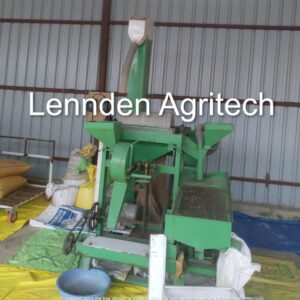The production of pulses, commonly known as dal, is a significant part of agriculture and nutrition in many countries. However, before these pulses can reach our plates, they go through various stages of processing, including cleaning, dehusking, splitting, and polishing. Among these stages, polishing plays a crucial role in enhancing the appearance and quality of dal. To achieve this, dal polish machine come into play.
The Importance of Dal Polishing
Dal polishing is the final step in the processing of pulses, and it serves several essential purposes:
Improving Appearance: Polishing gives dal a shiny and lustrous appearance, making it more visually appealing. This is particularly important in the competitive food market, where the presentation of the product matters.
Enhancing Quality: The polishing process helps in removing the fine layer of dust and other impurities that may remain on the dal’s surface after earlier processing stages. This results in cleaner and more hygienic dal.
Increasing Shelf Life: Polishing reduces the moisture content on the dal’s surface, making it less susceptible to spoilage during storage. This helps in extending the shelf life of the product.
Removing Undesirable Odors: Some pulses may have a natural odor or taste that isn’t pleasant to consumers. Dal polishing can help in reducing or eliminating these unwanted characteristics.
Ensuring Uniformity: Polishing helps in achieving uniformity in the appearance and quality of dal, making it suitable for various culinary applications.
The Role of Dal Polish Machines
Dal polish machines are specialized equipment designed to carry out the polishing process efficiently. These machines are available in various capacities, ranging from small-scale units suitable for local businesses to large-scale industrial models for commercial dal mill operations.
Key Features of Dal Polish Machines:
Polishing Chamber: Dal is loaded into the polishing chamber, where it undergoes the polishing process. This chamber is often lined with abrasive material to achieve the desired level of polishing.
Variable Speed Control: Many dal polish machines come with variable speed controls, allowing operators to adjust the polishing intensity according to the type of dal being processed.
Dust Control: Effective dust control systems are integrated into the machines to ensure that dust and debris generated during polishing are contained and removed, maintaining a clean working environment.
High-Quality Polishing Materials: Dal polish machines use high-quality abrasive materials, often made of food-grade components, to ensure that the dal remains safe for consumption.
Easy Maintenance: These machines are designed for ease of maintenance, with accessible components for cleaning and replacement.
The Dal Polishing Process:
The process of dal polishing typically involves the following steps:
Loading: The cleaned and dehusked dal is loaded into the polishing chamber of the machine.
Polishing: The dal is subjected to abrasion from the polishing materials within the chamber. This removes the outer layer of impurities and enhances the appearance.
Dust Extraction: Dust and fine particles generated during polishing are extracted and collected, ensuring a clean working environment.
Unloading: The polished dal is then unloaded from the machine, ready for packaging or further processing.
Advantages of Dal Polish Machines:
Consistency: Dal polish machines ensure consistent polishing results, maintaining quality and appearance standards.
Efficiency: These machines can handle large quantities of dal in a relatively short time, improving overall production efficiency.
Hygiene: The use of food-grade materials and effective dust control systems ensures that the polished dal remains hygienic and safe for consumption.
Extended Shelf Life: Polished dal has a longer shelf life, reducing the risk of spoilage and wastage.
Choosing the Right Dal Polish Machine
When selecting a dal polish machine, several factors should be considered:
Capacity: Determine the quantity of dal you need to process regularly and choose a machine with an appropriate capacity.
Quality: Look for a machine made from high-quality materials to ensure longevity and efficient operation.
Customization: Some machines offer customization options for specific polishing requirements.
Maintenance: Consider the ease of maintenance and availability of replacement parts.
Budget: Determine your budget and select a machine that fits your financial constraints.
Conclusion
Dal polish machines are an integral part of the pulse processing industry, contributing to the enhancement of dal quality and appearance. These machines play a vital role in ensuring that the dal we consume is not only nutritious but also visually appealing and safe. With the right dal polish machine, producers can meet the demands of the market while maintaining the high standards of quality and hygiene expected by consumers.


